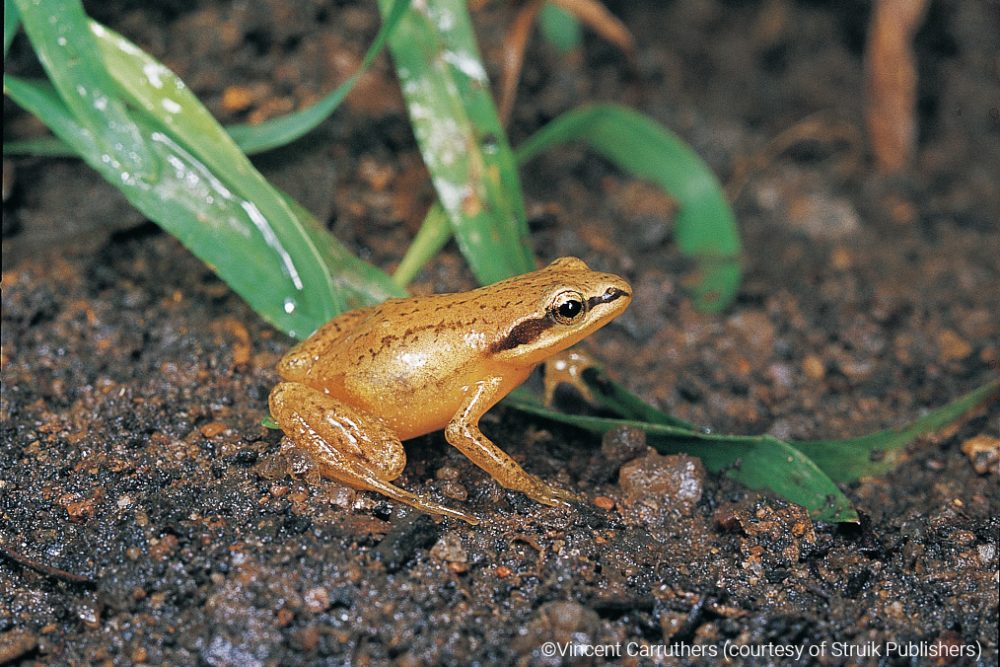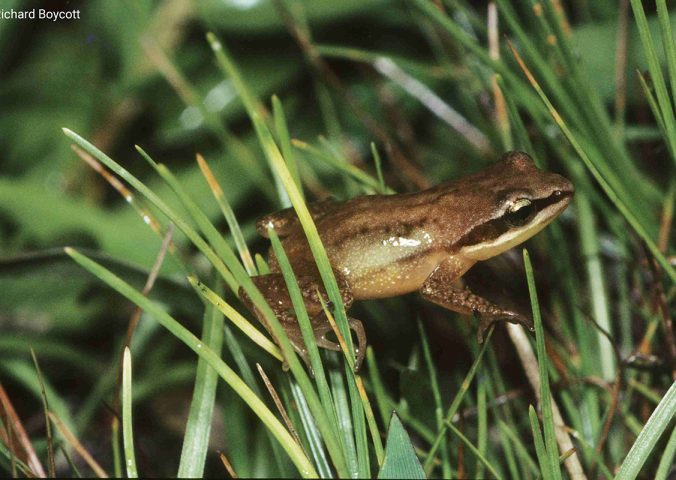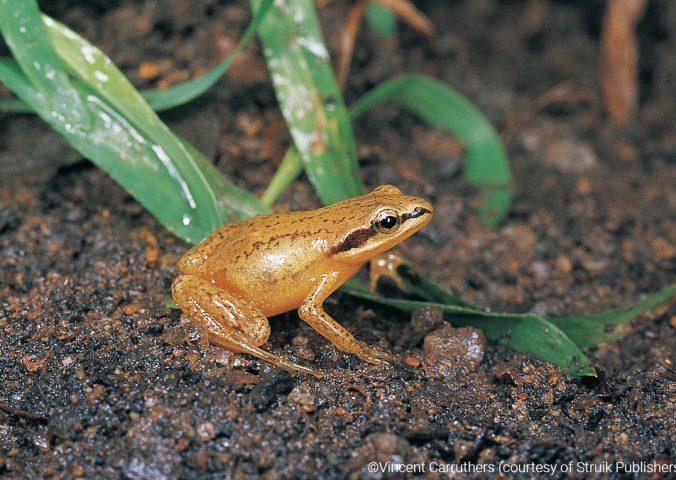About
The mistbelt moss frog, also known as the mistbelt chirping frog, reaches lengths of just 2 cm. This may be the reason why this species was only discovered in 1993, alongside its faint call, making it difficult to detect.
The genus to which this species belongs diverged from all other frogs almost 60 million years ago. In evolutionary terms, this means that giraffes are more closely related to dolphins than this genus of frogs is to any other living amphibian!
The Mistbelt moss frog can be identified from all other members of its genus by its distinctive call, which is a soft cricket-like trill. The call is very quiet as the males do not have a vocal sac. Males will call both day and night when it is misty but, when humidity is lower, calling is restricted to the night.
This tiny frog occupies an area around 10 km², and the area of occupancy and number of subpopulations is declining. There are around 3,000 individuals remaining, and the Mistbelt moss frog is listed as Endangered by the IUCN Red List.
Habitat loss and fragmentation from fires and alien tree plantations are the largest threats to this species. Particularly, the plantations of the non-native wattle tree can cause the water table to drop, facilitating hotter fires than would naturally occur in this region. Only around a quarter of the frog’s historical habitat, the Mistbelt grassland, remains, of which only 2.5% is protected. However, this species does occur in the protected Ngele Forest Reserve.
- Order: Anura
- Family: Pyxicephalidae
- Population: 2500-3350
- Trend: stable
- Size: 19-22mm
EDGE Score
Distribution
This species is found in the KwaZulu-Natal Province, South Africa.
Habitat and Ecology
This is a terrestrial group of frogs that have adapted to life without water and have direct development, whereby a free living larval stage (tadpoles) is bypassed and young emerge from the eggs as miniature versions of the adults.



